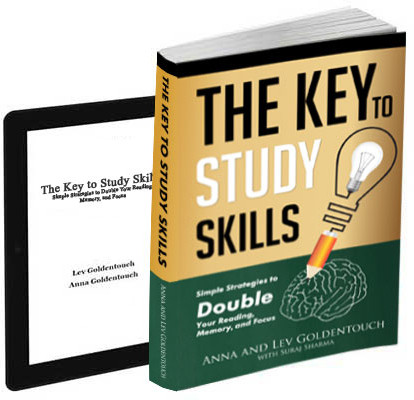Different cultures have evolved remarkably distinct systems of thinking, learning, and visualizing. Nowhere is this more evident than in the contrast between Chinese hieroglyphic visualizations and Western mnemonic systems.
While Western learners often rely on letter-based wordplay, acronyms, or phonetic tricks to aid memory, Chinese thinkers leverage highly visual, symbolic, and holistic approaches to encoding meaning. This isn’t just a linguistic quirk—it reflects different neurological and cultural pathways in how we process, store, and recall information.
I do not know Chinese and do not have enough motivation actually to learn it, I rely on the experience of other people, such as this, this and this resources.
In this article, we’ll break down the differences between Chinese visual strategies and English mnemonics, explore their cognitive benefits, and show you how to blend both worlds to boost your memory, focus, and learning capacity.
Chinese Visual Markers: A Natural Mnemonic Language
Chinese script is fundamentally pictographic and ideographic—each character isn’t just a phonetic unit but a symbolic visualization of meaning. Many characters are derived from ancient drawings of animals, tools, people, or natural elements. Even modern simplified forms retain the visual essence.
This innate visual richness means Chinese learners don’t need to create separate visual markers like Western students might when using memory palaces or imagery-based recall. The writing system itself is a built-in mnemonic device.
An example often cited is how Chinese characters for “family” or “society” involve symbolic references to pigs under roofs—anchoring cultural meaning into pictorial script. Visualization becomes not just a strategy but a standard part of literacy.
Memory champion Wang Feng used this to his advantage, integrating visual Chinese characters into his mental structures. His success and influence show how native scripts can shape world-class memory skills.
To replicate this approach without learning Chinese, you can substitute logos, emojis, or icons in your PAO-based visualization systems. The brain doesn’t require language-specific cues—it simply needs consistent visual anchors.
Western Mnemonics: Phonetics Over Picture
In contrast, English and most Western languages use alphabetic writing, which requires learners to manipulate sounds and syllables to construct meaning. Mnemonics here tend to focus on:
- Acronyms (e.g., PEMDAS for math order of operations)
- Rhymes and alliteration
- Peg words and phonetic coding
- PAO (Person-Action-Object) systems for visualization
Because the script isn’t visual by nature, learners must build an artificial layer of memory encoding, converting sounds into images or actions.
But this weakness becomes a strength when leveraged properly. In fact, PAO and memory palace techniques can allow a single visualization to encode five or even twenty words, especially when combined with structure and spatial imagination.
Dual Coding: The Shared Secret of Both Systems
Despite structural differences, both Chinese and Western memory systems benefit from dual coding theory—using both verbal and visual memory pathways to reinforce recall.
A fascinating study noted that in Chinese, dual coding works best when applied to entire ideas rather than single characters. Since tones and subtle pronunciation can vary in meaning, chunking becomes essential. Chinese learners often remember concepts as visual packages, not fragmented syllables.
That’s a powerful tip for English learners, too: instead of visualizing a single word, visualize a concept, scene, or interaction. This creates emotional and narrative connections, which makes recall stronger.
For more insights on how to make your visualizations vivid, emotional, and unforgettable, check out this post on making your imagery memorable.
Dyslexia and Visual Reading
Interestingly, dyslexia manifests very differently across languages. In English and other alphabetic languages, dyslexia is often caused by difficulty processing sequences of letters. In Chinese, there are no letters—just entire characters.
As a result, dyslexia in Chinese learners looks more like a visual decoding issue, while in English it’s usually phonological. The total number of affected students is similar, but the mechanisms are different.
What’s more intriguing is that reading visually can bypass some dyslexia-related limitations. Many of our students with dyslexia have experienced breakthroughs using our methods of visual reading and memory training. When dyslexic learners read words as whole shapes or images, rather than sounding them out, fluency often improves dramatically.
Some Chinese learners even report that learning English through superlearning techniques helps them overcome their native-language dyslexia, especially when paired with visualization.
Visualization and Typing: Pausing to Plan
Modern technology bridges many gaps between writing systems. With pinyin-based typing systems like Sogou or Synotype, Chinese input is now phonetic—but with a twist. Users must still select the correct character from multiple visual options, forcing a small moment of conscious planning.
This pause is valuable. It encourages visualization during writing, which is parallel to visualization while reading. Even in Western typing, building the habit of pausing for a split second before selecting a word reinforces intentional language and memory encoding.
This pause-and-plan habit has additional benefits in programming, design, and structured thinking—slowing you down just enough to prevent burnout and mistakes.
The Chinese Productivity Secret: Napping?
Here’s something you don’t usually find in memory textbooks: the power of a short midday nap. In many Chinese companies, napping after lunch is encouraged—and for good reason. A 20–30 minute nap can significantly improve memory consolidation, mental clarity, and attention span.
For superlearners, this is a cognitive hack that pays off. Use naps not as a luxury, but as part of a learning lifestyle. Combine it with visualization or light meditation for a powerful mental refresh.
Want a deeper dive into how physical habits connect to mental performance? Explore our full Memory Masterclass course for science-backed strategies that link sleep, focus, and memory mastery.
Cultural Intelligence: Learning from Differences
The takeaway here isn’t that one system is better—it’s that we have much to learn from how other cultures think. Chinese visual encoding, European PAO methods, and modern neuroscience all point toward one truth:
Memory is flexible. Visualization is powerful. And cross-cultural strategies can supercharge your learning.
You don’t need to know Chinese to use hieroglyphs. You can create your symbolic language using emojis, personal icons, or story-based memory techniques. The more emotionally and visually loaded your imagery is, the better it works.
To explore how people historically used PAO and story-driven visualization for memory, check out this fascinating piece on PAO in history and ancient memorization.
Final Thoughts: Visualize Your Way to Smarter Learning
Each great culture has evolved tools to process and preserve knowledge. Chinese hieroglyphs are a sophisticated example of visualization embedded into daily life. Western memory systems, while more artificial, allow for flexible mental engineering. Together, they form a blueprint for global memory mastery.
Whether you’re a student, a knowledge worker, or a lifelong learner, you can blend these traditions to build your custom memory system—one that’s fast, visual, and deeply personalized.
🧠 Ready to master your memory? Start with the KeyToStudy Memory Masterclass
📘 Read more in our Books on Amazon
💬 Join the community via KeyToStudy on Facebook
Your brain isn’t bound by language—it’s unlocked by imagination. Use it well.

Get 4 Free Sample Chapters of the Key To Study Book
Get access to advanced training, and a selection of free apps to train your reading speed and visual memory

